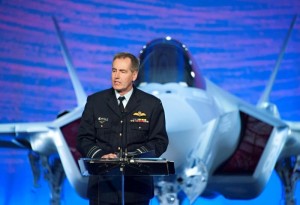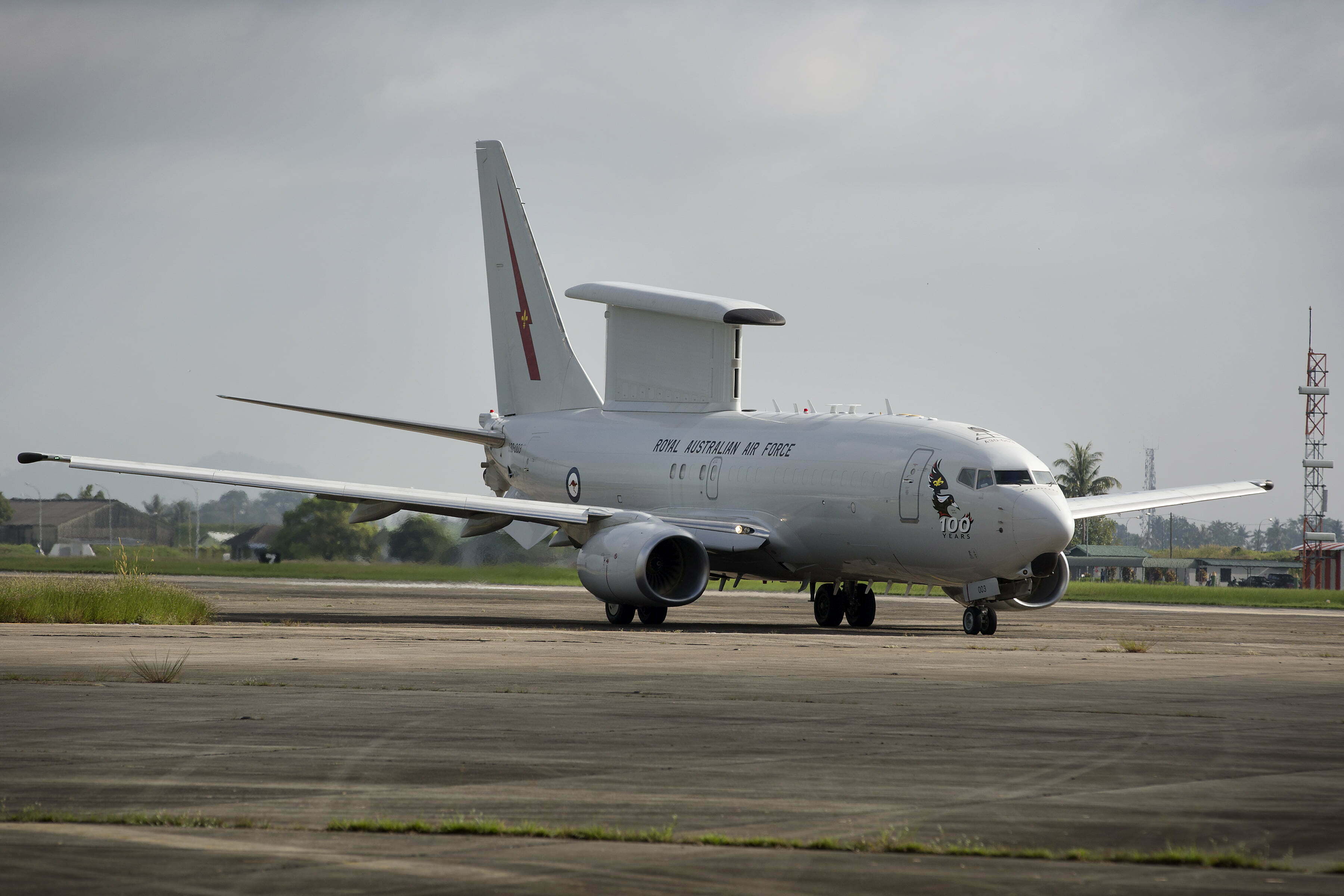2017-04-26 By Robbin Laird
Shifting from a primary focus on the counterinsurgency focused land wars of the last 15 years to shaping a high intensity combat force, which can prevail against peer competitors, is a significant challenge for the United States and its closest allies.
A key dynamic within this effort is the crucial opportunity the US and its closest allies have from cross learning because a number of the core systems being stood up to achieve the kinds of combat effects which is needed are being procured at the same time.
Key allies have also put in play concepts of operation in advance of the United States; ironically, often with systems derived from the efforts of key US defense firms.
The F-35, P-8, Triton and Growler are all being stood up by the United States and by our closest allies, notably Australia.
Norway is also drawing upon this interactive modernization process to stand up its own 21st century combat force.
At the same time, the Wedgetail and the KC-30A have been deployed for some time and are cutting edge systems NOT to be found in the US inventory.
Additionally, the RAF is modernizing its Typhoons with long range strike systems complementary to their F-35s prior to the US having made similar adjustments to its own legacy aircraft.

Air Marshal (Retired) Brown, Chairman of the Williams Foundation, April 11, 2017.
There is no ambiguity in the UK or Australian minds about the shift to fifth generation warfare as opposed to having lingering debates about remaining mired in a last generation mentality.
There is little question that key elements of the USMC, USN, USAF and US Army are working to drive a transition; and they are aided and abetted in this process by core allies.
It is not a question of selling systems to these allies AFTER the US has shaped a new strategy and a new capability; it is about reshaping in an interactive transformation process.
The problem for the United States is that a legacy defense acquisition system and barriers to effective transformation remain in being.
For example, we are still pursuing AWACS modernization when Wedgetail has demonstrated a clear 21st century alternative; and the global fleet of Airbus 330MRTT tankers are reality; with NO new tankers flying in the USAF and flying the second choice for the USAF is a limiting factor.
It is crucial for the United States to tap the new systems and develop new concepts of operation to capitalize on the new force; yet the legacy acquisition and stove piped service dominated systems limits the potential for the United States.
How has this happened?
During my latest visit to Australia I participated in a Williams Foundation seminar that was debating in public (and without doing so it will be difficult to gain the broad support necessary for transformation) how best to build an integrated joint force from the ground up.
No one is deluded that this will be difficult; but if you don’t set the objective when you are buying software upgradeable systems, which have an inherent potential for interactive modernization, and force transformation you are not going to get there.
When you are left with things like a 2030 AWACS modernization focus, or a Super Hornet versus F-35 conversation, or keeping a A-10 tank killer designed 40 years ago, it is difficult to boldly lead a transformation effort.
 Air Marshall Brown speaking at the Fort Worth based event July 24, 2014. Credit Photo; Lockheed Martin
Air Marshall Brown speaking at the Fort Worth based event July 24, 2014. Credit Photo; Lockheed Martin
After the seminar, I had a chance to discuss the challenge with Air Marshal (Retired) Geoff Brown and to get his thoughts on the challenge facing the United States.
To be clear, the crucial working role between cutting edge professional military and the Aussies is crucial to the Aussie transformation effort.
That is not in question; what is in question is the capability of the United States to make the leap forward with the service dominated and legacy acquisition system and the constant constraints which Congress has placed upon the dramatic change which the US military needs to make to defend the United States and to compete effectively with peer competitors.
According to Brown, “the systems are all there in the United States. The shoots are there for fundamental change. But the legacy approach is like a giant tree blocking out the sun for the shoots to grow.”
He pointed out that the notion that one would modernize AWACS is “simply amazing to me. With the fuel savings alone from replacing the AWACS fleet with Wedgetails a new fleet could be paid for in a few years. But that in the US system it is difficult to get a tradeoff from keeping the old legacy systems running and simply shutting them down; putting the new systems into the force; and leveraging them rapidly.
The new systems require new sustainment approaches.
“The F-35 provides a great opportunity for a very different sustainment system but with the Congressional mandated depots the opportunities for an innovative industrial-government partnership are severely constrained.”
As the Trump Administration looks to rebuild the force if the fundamental barriers are not addressed, “even 50-60 billion dollars more won’t correct the kinds of logistical shortfalls which the United States faces.
“I’m a little frightened for the future if the US forces keep going down the path they’re on at the moment.
“Just wishing that additional money will be available to operate the legacy force structure isn’t going to solve the problem.
“The current funding issues and congressional limitations placed on the Services will drive the US towards and increasingly hollow force.”
He sees a significant opportunity to unlock potential by shaping new logistical approaches such as evident in the C-17 support model.
“There are green shoots all over the United States.
“The United States is the most innovative society in the world, without a doubt.
“One green shoot is the C-17 support model.
“By using a very innovative industrial working relationship with the deployed force, support costs are going down, not up.
“So why not adopt this model for the new force being built.
“We certainly are going to focus on that with P-8 and F-35.
“The US logistical support system and the congressional mandated Title 10, 50:50 requirement to protect government depots severely hampers and constrains the services and has a significant impact on their force readiness.”
KC30A Over Iraq from SldInfo.com on Vimeo.
He added “You’ve just got to invest in the new systems and follow their logic and prioritize it above everything else and be prepared to cut away things that don’t make sense in the future.
“You should cut away half the stuff that you needed for Iraq in Afghanistan because you’re not going to fight like that in a world of peer competitors. It is like the Nike slogan: Just do it.”
Other core allies have noted what Brown is talking about, and I have heard that from those allied militaries in my global travels.
To take one example, a senior RAF officer who flew in Red Flag 17-1 noted “he would never wish to fly with an AWACS if he had a Wedgetail. The AWAC constrains; the Wedgetail supports of fifth generation force.”
And the Aussie tanker has had dispatch rates and performance metrics off the charts compared to the current crop of USAF tankers.
Lt Gen (Ret) David A. Deptula, who has a been a proponent of rapidly moving toward new concepts of operation enabled by fifth generation aircraft, supports Brown’s points.
“We have all the capabilities necessary to dramatically improve our warfighting capacity, we just have to gather the will to apply them in new ways unencumbered by paradigms of the past.”
In short, we can learn from allies.
If we want to make America great again, ironically the path goes through working on an across the board transformation of US force interacting with cutting edge allies.
Editor’s Note: This piece was first published on Breaking Defense.


